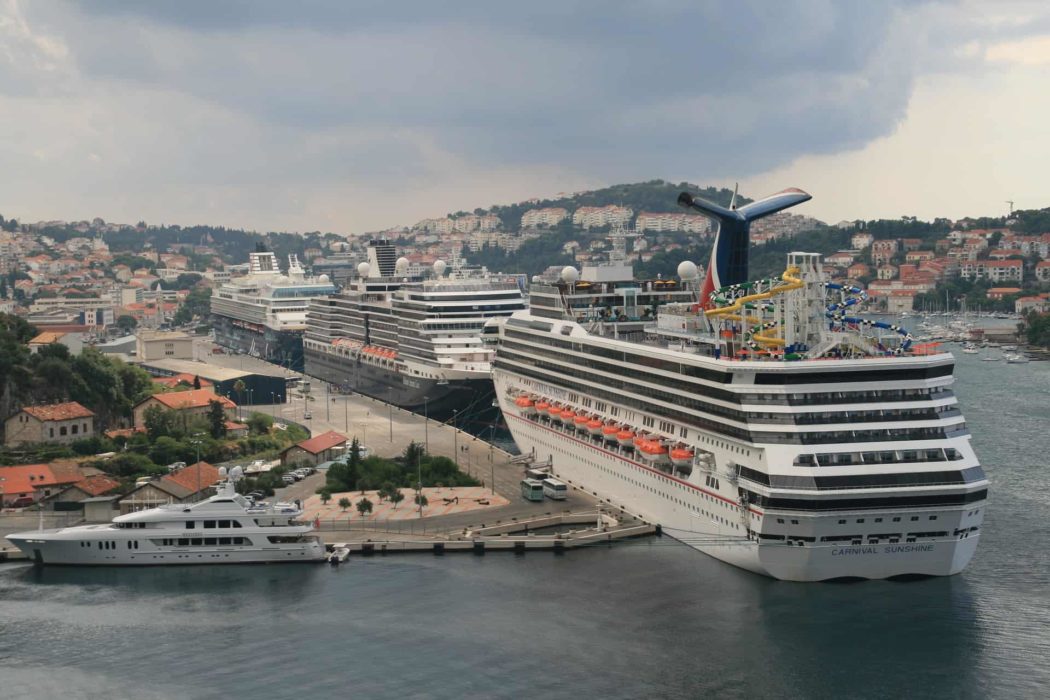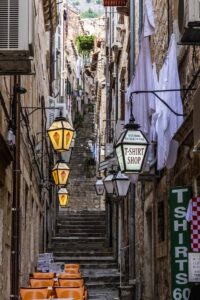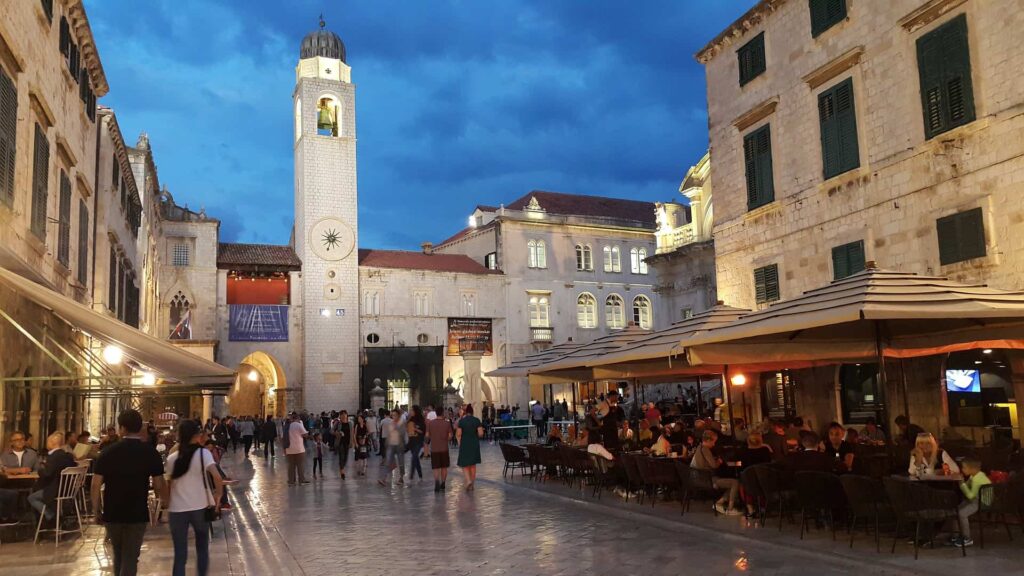Dubrovnik, Croatia, a UNESCO World Heritage city, is known as the ‘Pearl of the Adriatic Sea’, its historic city center surrounded by original medieval stone walls – and until recently, thronged with cruise ship passengers. In 2017, that began to change. The following before-and-after story has been provided by the Mayor’s Office, City of Dubrovnik (with a closing note on the Covid hiatus).

[All photos courtesy of the City of Dubrovnik]
‘Respect the City’ Program Includes Limits on Cruise-ship Crowds
Dubrovnik, a champion of Croatian tourism, is a city that is both a museum and a performance stage, a unique combination of history and modernity – a city with a capital C. Its rich cultural heritage, different architectural styles, various cultural events, film tourism (think Game of Thrones), Mediterranean flavors, and superior accommodations draw millions of tourists each year. The old city center, surrounded by original medieval walls, has been under UNESCO World Heritage inscription since 1979.
The coastal city is a popular stop-off for cruises. In 2013, for instance, there were more than one million cruise passengers in Dubrovnik, occasionally resulting in more than 10 thousand visitors in the historic core at one time.

By 2017 the city was facing negative publicity in global media due to overtourism and uncontrolled tourism development. The city was falling victim to its own success, and its citizens were becoming more openly critical. Amidst such chaos, many visitors could not fully experience the city’s history and culture. Eventually, UNESCO warned that the overwhelming number of tourists could result in its World Heritage listing being revoked and advised that no more than 8,000 tourists be in the historic core at any one time.

Shortly after being elected in June 2017, mayor Mato Franković introduced the multidisciplinary project “Respect the City” (RTC), aiming for more sustainable development of Dubrovnik. He began tackling the difficult challenge to reduce overcrowding through different measures for relieving traffic congestion and implementing smart city solutions. In particular, he reduced the number of souvenir stands by 80 percent and cut the number of restaurant tables and chairs by 30 percent. As a result, the City has lost some revenue, at least 5 million kuna a year (around €660,000 or US$786,000 ). To illustrate, the highest rent for a small stand at that time was more than 400,000 kunas annually, achieved at public tender.
‘Some of the measures we implemented are unpopular, but such moves are necessary if we want to reach the sustainable tourism we seek’, said Mayor Franković about financial losses. ‘Our task is to put the needs of citizens first. Everything we have done and will do in the future will greatly contribute to creating a unique destination experience and increase the quality of the overall service for all visitors’.
Various strategies have been implemented in cruise tourism. The City approached the Cruise Lines International Association (CLIA) and, in partnership with them, reorganized cruise schedules to stagger departure and arrival times. It is essential to emphasize that the cruise industry is an important segment of the economy in Dubrovnik. The city policy was that the number of people was never a problem; it was the flow. Better flow was achieved by organizing the ship-arrivals timetable more carefully, both daily and throughout the year. The maximum number of ships was set to two ships at once and the limit of visitors in the walled city coming from cruise ships at 4,000 – half the number suggested by UNESCO. Harmonization of arrival times has relieved pressure on the historic core in the summer seasons of 2018 and 2019 (pre-COVID years), compared to 2017 and earlier.


CLIA´s repeated willingness to cooperate in order to resolve the existing problems in the spirit of partnership is precious to the City of Dubrovnik. As a part of that partnership and the “Respect the City” project, Dubrovnik in 2019 became one of the 30 world destinations for which the Global Sustainable Tourism Council (GSTC) has done a Destination Assessment and Action Plan. Development of the Plan represents the City’s firm commitment and unshakeable determination in moving tourism towards a sustainable future.
The City achieved 70% of excellence in the GSTC report, attesting to its focus on a sustainable future for tourism and the city. GSTC recognized numerous examples of good practices in the process, mainly regarding public safety, urban cleanliness, and a high degree of heritage conservation. These included the reconstructed Lazareti site, special measures for heritage protection, local festivals, products, and entrepreneurs, as well as protection of biodiversity, and monitoring the Respect the City project itself.
Sustainable Tourism for a Sustainable Future
‘This report represents a new beginning of the story of a sustainable Dubrovnik and a sustainable way of managing tourism as our main industry,’ said Mayor Franković. ‘Working on assessment in 2019, GSTC consulted with 70 stakeholders from national and local government, the private sector, NGOs and universities, and residents. All stakeholder inputs are very valuable to us, because we want our city to be a great place for anyone – residents and guests alike’, he concluded.

The conservation of cultural heritage, the quality of citizens’ daily lives, and the provision of the best possible experience of Dubrovnik as a destination – all those are motives for this shift in destination management. Respect the City attracted the attention of international media and the global tourism sector. Dubrovnik is increasingly becoming perceived as a city that has started managing its tourism in a sustainable way. As key factors in years to come, the City of Dubrovnik is planning to take over cruise ship shuttle services and gradually eliminate traffic around the gateway area.
In COVID-19 times Croatia was recognized as a safe destination due to its good epidemiological situation in 2020, and safety continues to be the focus in 2021.

